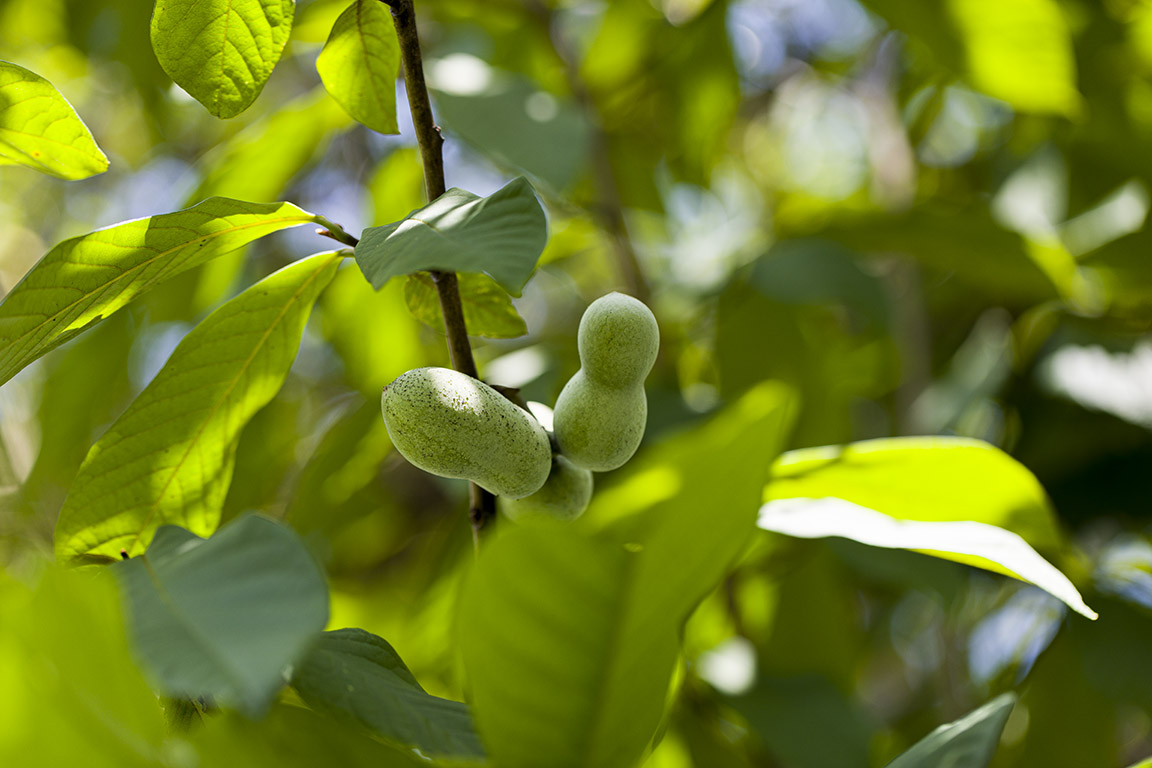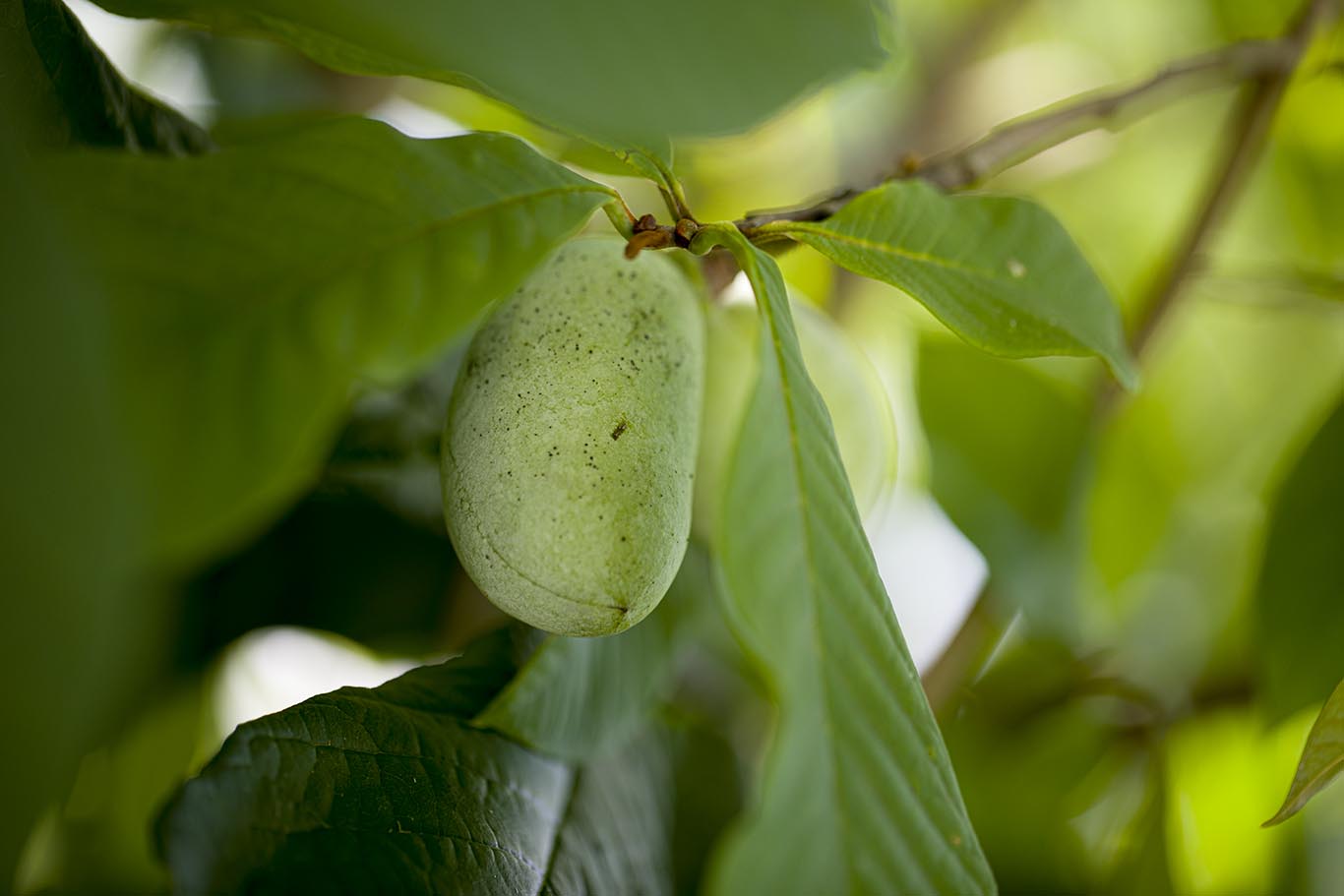
Pawpaws (Asimina triloba) are a delicious native fruit that grows wild in Maryland and also makes a wonderful addition to your garden if you have a partially shady spot that gets a little bit more water. Pawpaws like to propagate by sending up new shoots from their root tips, although they're easily trimmed back if you want to keep them more tidy and limit the number of trees. They can also be propagated from seeds or purchased as juvenile plants from nurseries. If adding them to your garden, know that it takes quite a few years until they mature and start to bear fruit, but it's well worth the wait.
Groves of these small understory trees can also be found tucked away on our very own UMBC campus near streams and ponds as well as a few that were planted near the community garden.
Due to their short shelf life, pawpaws aren’t usually sold in supermarkets but can be found in local farmers' markets and at a few orchards in Maryland starting mid to late August and into September. There are a few annual festivals in Maryland, Virginia, and Pennsylvania that celebrate the fruit (although, sadly, probably not this year). Also, keep an eye out for locally made pawpaw jams and ice cream that tend to show up around this time. Squishing fresh ripe pawpaws up in some vanilla ice cream with a little sprinkle of cinnamon is a sure winner for hot summer evenings. Or the New York Times has a pawpaw pudding recipe that's pretty great.
Another interesting fact and reason to add them to your garden is that pawpaws are the sole host plant for beautiful Zebra Swallowtail butterflies.
Local nurseries will carry different cultivars of this native tree. It's best to purchase at least two for pollination. A few favorite spots to source these from are Herring Run Nursery (purchases supports clean water ways in Baltimore) and Chesapeake Natives, Inc.
For more information:
USDA PDF download






